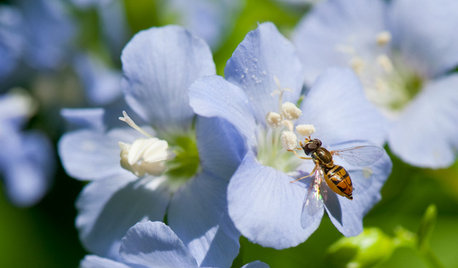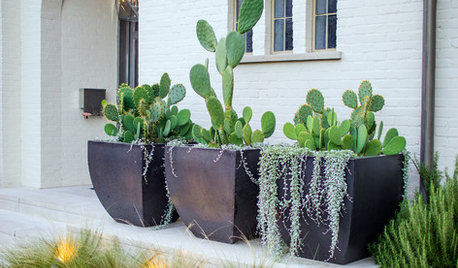Root Weevils and Rhodos
aftermidnight Zone7b B.C. Canada
14 years ago
Related Stories

COOL-SEASON CROPSCool-Season Vegetables: How to Grow Carrots
More than just a bunny food, easy-to-grow carrots add lacy good looks to a fall or spring garden
Full Story
GARDENING GUIDESHow to Keep Your Citrus Trees Well Fed and Healthy
Ripe for some citrus fertilizer know-how? This mini guide will help your lemon, orange and grapefruit trees flourish
Full Story
GARDENING GUIDESGreat Garden Combo: 3 Wonderful Plants for a Deer-Resistant Screen
Protect your privacy and keep deer at bay with a planting trio that turns a problem garden area into a highlight
Full Story
GARDENING GUIDESWhat's Wrong With My Plant? Leaves Often Hold the Clues
Learn how to identify common plant ailments by reading their leaves
Full Story
GROUND COVERSGround Force: 10 Top Ground Covers for Your Garden
Protect your soil from weeds and drought this summer with a living mulch of ground covers
Full Story
LIFE7 Things to Do Before You Move Into a New House
Get life in a new house off to a great start with fresh paint and switch plates, new locks, a deep cleaning — and something on those windows
Full Story
LANDSCAPE DESIGNGarden Overhaul: Which Plants Should Stay, Which Should Go?
Learning how to inventory your plants is the first step in dealing with an overgrown landscape
Full Story
GARDENING GUIDESGreat Design Plant: Polemonium Reptans Paints Woodlands Blue in Spring
Plant Jacob’s ladder in eastern U.S. woodland gardens for its bright blue flowers and delicate foliage
Full Story
CONTAINER GARDENSCactus and Succulent Containers Are Ideal for Hot, Sunny Spots
Bring on the sun with these heat-loving succulent container gardens
Full Story
SPRING GARDENINGSummer Crops: How to Grow Strawberries
Pluck your own sweet strawberries right from the garden vine for smoothies, salads or eating then and there
Full StoryMore Discussions









Embothrium
gardengal48 (PNW Z8/9)
Related Professionals
Wrentham Landscape Architects & Landscape Designers · Alexandria Landscape Contractors · Jackson Landscape Contractors · Peabody Landscape Contractors · Fort Mill Landscape Contractors · Lady Lake Landscape Contractors · Lebanon Landscape Contractors · Oak Harbor Landscape Contractors · Silver Firs Landscape Contractors · Kansas City Fence Contractors · Lady Lake Fence Contractors · Lincolnwood Fence Contractors · Madison Fence Contractors · Ponte Vedra Beach Fence Contractors · Sacramento Fence ContractorsEmbothrium
aftermidnight Zone7b B.C. CanadaOriginal Author
Embothrium
aftermidnight Zone7b B.C. CanadaOriginal Author
hallerlake
Embothrium
botann